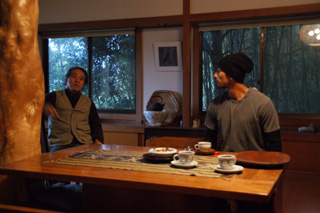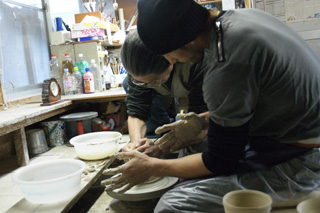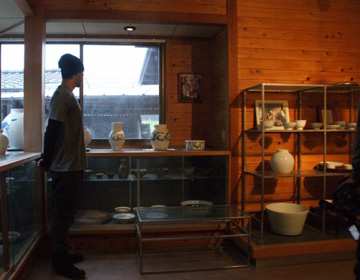 |
Handmade porcelainAt the southern end of Matsuyama City, Ehime Prefecture, there is a town called Tobe (砥部). As the name kanji characters suggest, it is a town that used to be a production center of grinding stones. In the Edo period, porcelain were made using grinding stone powder as a raw material, and it developed into ”Tobe-yaki” porcelains. ”Tobe-yaki” was designated as a National Traditional Craft in 1976. |
Beyond ethnicity and historyKudo has held many ceramic exhibitions at museums and galleries throughout the country, and his works has many fans. For example, a warm, white porcelain with a unique arabesque design. This is now a design representative of the modern ”Tobe-yaki”. The design was created about 20 years ago by Kudo, and it was inspired by the arabesque patterns seen at a museum in Iran. |
 |
ACCESS
- Shunjugama
- 888 Gohonmatsu, Tobe-cho, Iyo-gun, Ehime Prefecture
- URL http://www.tobeyaki.org/kamamoto/053.htm
 Discovering Japan [Nihon] through authentic craftsmanship [Honmono]
Discovering Japan [Nihon] through authentic craftsmanship [Honmono]